Renewable Power - Another Policy Failure
Targets for "green" generation without sufficient energy storage have driven us to an expensive dead end
UK energy policy right now 1
Summary
A lot more wind—over 2½ times what we have now—wouldn’t keep the lights on in a decarbonised UK unless we also install immense energy storage: see Part 2 of UK plc Power Decarbonisation.
A lot more solar PV—4 times what we have now—barely scratches the surface of the problem of keeping a decarbonised UK’s lights on.
Building a lot more nuclear power generation—4 or 6 or 8 more Hinkley Point Cs or the equivalent—would mostly ensure that we keep the UK’s lights on and would also greatly reduce the UK’s CO2 emissions, but some fossil fuel generation would still be needed.
The more nuclear generation is added, the more surplus renewable generation is rendered unusable.
UK energy policy now is a bigger and more expensive failure than the dash for diesel 20 years ago.
Introduction
Following on from my two previous substack posts (accessible via Part 2 of UK plc Power Decarbonisation), I explore the option of adding much more solar power generation, and the implications of more nuclear power.
We are now in early March 2022 so I have extended the range of real data to include January and February of this year. For convenience I refer to the 14-month period comprising all 2021 plus Jan-Feb 2022 as “2021+”.
In this post I continue to use the same units, mega-watts (MW) for power flows and mega-watt hours (MWh) for amounts of energy to keep it human-scale. I use actual 2021+ Gridwatch power flow data, recorded every 5 minutes i.e. 60/5 = 1/12th of an hour. There are just over 122,000 sets of real data in 2021+.
In my previous posts I considered how we might achieve the target of decarbonising UK power generation, and some logical implications. This post demonstrates that the target is impracticable with current technology, and that we have probably wasted enormous sums of money on intermittent generation capacity. Without simultaneous development of energy storage at grid scale the renewable energy policy has failed.
2021+
First off, a reprise of the analysis of the real data for the 14-month period covered by 2021+.
Chart ‘21+E-1: 100% of current wind, 100% of current solar, for 2021+ :
This immediately confronts the wishful thinking of renewables-boosters 2 because they assume kind weather conditions with rare short interludes of low wind. In fact, the extended lull (marked in green) after the New Year 2022 lasted about 19 days, from 10/01/22 03:15 until 28/01/22 20:40. The cumulative shortfall of renewable energy over that 450-hour lull was ~8,350,000 MWh, an average of nearly 18,600 MW.
The MetNet data plotted in Figure 1 shows daily average temperatures in the middle of the UK (Stourbridge, west of Birmingham). If we had been totally reliant on renewables during that lull it would not have been comfortable, especially for vulnerable people.
Figure 1: Daily Temperatures in Stourbridge 10-28 January 2022
2021+ with more solar generation
In my previous posts I focussed on increasing wind generation. Some commenters suggested we need instead to greatly increase solar photo-voltaic (solar PV) generation - despite the reservations I expressed in my first post because of our northerly location. Here goes with four times our current solar generation.
Chart ‘21+E-2: 100% of current wind, 400% of current solar, for 2021+ :
Unsurprisingly, we would get much more renewable energy during the spring through autumn months if we massively increased solar PV. The positive power spikes (actual wind plus 4 times actual solar) peak at about 20,000 MW, while the shortage spikes are about 10-15,000 MW in the lighter months, and 20-25,000 MW from November through January.
Below is the cumulative energy chart for this scenario. The total fossil energy required to keep the UK’s lights on would be about 95 million MWh for 14 months - but only IF we had nearly 5 million MWh of storage to charge in times of surplus solar power generation. If we didn’t have that immense grid-scale energy storage the fossil energy would be just over 100 million MWh.
Chart ‘21+F-2: 100% of current wind, 400% of current solar, cumulative energy 2021+ :
UK Energy Policy
Current appalling events in Ukraine are making the world wake up to the need for energy security. We need to wean ourselves off hydrocarbons supplied by authoritarian states. The UK is in a much better position to do this compared with most of Europe. I think we also need to review security of supply of other resources, but that’s beyond the scope of this post.
Unfortunately, as the House of Commons Committee of Public Accounts reported on 23 February 2022, the UK’s energy policy to date has largely been wishful thinking. Or, quoting from the report’s summary in Whitehall-speak [my emphasis in bold]:
“The government has unveiled a plan without answers to the key questions of how it will fund the transition to net zero, including how it will deliver policy on and replace income from taxes such as fuel duty, or even a general direction of travel on levies and taxation. The Government has no reliable estimate of what the process of implementing the net zero policy is actually likely to cost British consumers, households, businesses and government itself. The HM Treasury witnesses we questioned were reluctant to be drawn on what the future costs of achieving net zero would be, cautioning that while the Climate Change Committee has provided estimates, they contain ‘heroic assumptions’ with errors potentially compounding over very long periods.”
I think “heroic assumptions” in this context must rank alongside “courageous”.
UK taxation policy was adjusted about 20 years ago to favour diesel vehicles because they achieve better economy per litre of fuel and was promoted as the answer to rising CO2 emissions. Consequently the number of diesel cars on UK roads quadrupled. The facts about other forms of pollution from diesels (which were always known) only forced an about-face by UK Gov when the “Dieselgate scandal” broke. Now, diesel vehicles are discouraged by UK tax policy.
Similarly, we have had years of HM Gov energy policy driving installation of more and more renewable generation. Generous subsidies have been used to ‘prime the pumps’ of the favoured technologies. This policy has driven us down an extremely expensive dead end: HM Gov has again failed to pick a winner.
What the UK should do in the short term
Don’t panic! 3
HM Gov should repeal legislation regarding Net Zero timescales. 4
HM Gov should fully fund basic home improvements. 5
HM Gov should relax or remove ideological regulatory constraints on UK fossil energy exploration and production. 6
One of those ideological constraints was imposed on fracking for shale gas onshore in the UK. Relatively few but highly vocal opponents of fracking combined with sympathetic views in Government Departments resulting in ‘withdrawal of support for fracking’ - effectively an outright ban. Recent suggestions that this ban should be reversed have had cold water poured over them by Carbon Brief among others, claiming it would not make much difference. The headline from Carbon Brief says fracking might yield “less than 5% of UK gas needs over next 5yrs”. Looking at the chart they reference the headline could equally say fracking might provide “nearly 20% of UK gas needs by 2030”.
The UKOOG report of March 2019 is by an industry body and so cannot be considered impartial. But neither are most of their detractors impartial. In various ways UKOOG’s report presents a far more optimistic picture of fracking over the medium to long term than suggested by Carbon Brief, see Figure 2.
Figure 2: Executive Summary from the March 2019 UKOOG Report “Updated shale gas production scenarios”
Looking further into the UKOOG report: “… central estimate for well productivity has increased to 5.5 billion cubic feet (bcf) per lateral, similar to average wells in the US)”. The central curve is in red in Figure 3, indicating that the UK’s dependence on imports could be slashed over the medium to long term. That is a huge improvement to energy security on the path to decarbonisation if it eventuated.
Figure 3: Chart 7 from the March 2019 UKOOG Report: Net import dependency
Figure 4 shows that UK CO2 emissions could also be slashed by displacing LNG imports by fracked gas. At the end of the day, isn’t that the whole driver behind Net Zero? Of course, fugitive methane emissions could undo some of that benefit, but it is likely that the UK regulatory regime would enforce better emissions controls on domestic gas production compared with LNG supply chains from distant parts.
Figure 4: Chart 10 from the March 2019 UKOOG Report: Cumulative CO2 Savings vs LNG
What the UK should do in the medium to long term
HM Gov should publish practical ideology-free guidance on heat pumps. 7
HM Gov should fund training of technicians / tradespeople. 8
HM Gov should cancel HS2: instead use the money to build nuclear capacity (see below) and improve internet connectivity.
More Nuclear
Billions of pounds are already in the budget for the new high-speed railway HS2. Our responses to the COVID pandemic included higher rates of working from home (WFH) for those people who could effectively do so. Continuing WFH where practicable would reduce the need for ‘fast’ train travel and further undermine the business case for HS2, which I suspect has a fair few “heroic assumptions” of its own. WFH reduces the need for travel generally, directly reducing CO2 emissions.
If HM Gov committed to build more nuclear power stations we would eventually achieve energy independence and energy security. The cost of Hinkley Point C (HPC, currently in construction) is around £25 billion for 3,200 MW of dispatchable power. If future power stations were close copies of HPC (which took about 5 years just to receive Office for Nuclear Regulation approval) hopefully we would save time. HPC also benefits from years of detailed engineering design. I would hope that if we avoid inventing a unique wheel every installation, we might reduce the cost and shorten the schedule of later copies. If HM Gov fully funded future nuclear projects I understand it would also remove costs of commercial risk and thereby reduce the price per MWh.
Note that Finland’s ‘Olkiluoto 3’ 1,600 MW plant has just gone online in Finland at a reported cost (despite huge delays) of EUR 11 billion / ~£9.3 billion.
Funding construction of new nuclear power plants as strategic national assets should also include transparent budgeting for decommissioning at the end of the ~60-year design life.
Four extra HPC-sized power facilities would cost of the order of £100 billion and would provide around 12,800 MW of low-CO2 9 power generation capacity for the UK whatever the weather and time of day. A recent LinkedIn post by Tony Griffiths summarised the UK’s current nuclear fleet as follows:
UK nuclear capacity is currently of 6.8 GW (6,800 MW)
It will decline further to ~6 GW as Hinkley Point B closes later in 2022, and then after two further closures expected in 2024 (Hartlepool and Heysham A) will reduce to below 4 GW.
The expected start-up of Hinkley Point C in 2025/2026 will add over 3GW of dispatchable power, and restore nuclear capacity to around 7 GW.
Tony’s chart of UK Nuclear Capacity - Output over Time (Historical and Future Expected) shows that historical load factors have averaged around 70% since ~1990. The new generation reactors are designed to have load factors ~85%. The load factor is the proportion of the design capacity that is actually generated, and allows for maintenance and inspection as well as operational issues.
Assuming the effective nuclear power from extra ‘Hinkley Point C’s would be the number of plants x 3,200 MW each x either 70% (lower estimate) or 85% (upper estimate) I produced energy charts for 2021+
Nuclear option A: 4 x 3,200 MW x 70% = 8,960 MW extra, ~£100 billion
Chart ‘21+E-3: 100% of current wind, 100% of current solar, extra nuclear 8,960 MW, for 2021+ :
The whole chart has been shifted upwards but there is still more red shortage than black surplus.
Chart ‘21+F-1: 100% of current wind, 100% of current solar, extra nuclear 8,960 MW, cumulative energy 2021+ :
IF we had over 9 million MWh of energy storage we would keep the lights on consistently through that 14 months using about 38 million MWh of fossil energy. Without energy storage the fossil requirement would be nearly 48 million MWh and the renewable energy wasted / constrained would be 10 million MWh.
To reduce the amount of fossil energy required we can consider six extra HPCs at the lower load factor (which is virtually the same as five extra HPCs at the higher load factor).
Nuclear option B: 6 x 3,200 MW x 70% = 13,440 MW extra, ~£150 billion
Chart ‘21+E-4: 100% of current wind, 100% of current solar, extra nuclear 13,440 MW, for 2021+ :
The whole chart has been shifted further upwards so that there are about equal amounts of red shortage and black surplus.
Chart ‘21+F-2: 100% of current wind, 100% of current solar, extra nuclear 13,440 MW, cumulative energy 2021+:
We would keep the lights on consistently through that 14 months using significantly less fossil energy. However, without immense energy storage, renewable energy wasted / constrained would be nearly 30 million MWh.
Even More Nuclear
Nuclear option C: 8 x 3,200 MW x 70% = 17,920 MW extra, ~£200 billion
Chart ‘21+E-5: 100% of current wind, 100% of current solar, extra nuclear 17,920 MW, for 2021+ :
The whole chart has been shifted further upwards again so that there much greater amounts of black surplus than red shortage.
Chart ‘21+F-3: 100% of current wind, 100% of current solar, extra nuclear 17,920 MW, cumulative energy 2021+:
We would keep the lights on consistently using much less fossil energy. However, quantities of renewable energy wasted / constrained are doubled to 60 million MWh.
It looks like 6 additional HPCs would be less expensive and less wasteful of renewable energy overall.
Where Does That Leave the UK?
In my second post I explored the effect of adding more and more wind. Even with ten times current wind generation we would not be able keep the UK’s lights on continuously without immense new energy storage as well.
With 2.7 times more wind we could keep the UK’s lights on continuously but only if we installed 13 million MWh of energy storage, which is thousands of times more than we (or anyone else) currently have. With today’s battery technology the cost of doing so would be around £2.7 trillion for energy storage alone.
Installing four times more solar PV than we currently have still fails to keep the lights on if we don’t have immense energy storage.
If we build a lot more nuclear capacity we will keep the lights on, but we will waste / constrain enormous amounts of renewable energy. The more nuclear power generated, the more ‘free’ renewable energy would be wasted.
For my analysis I have used the Hinkley Point C nuclear power facility. An alternative generating much excitement is the small modular reactor (SMR) concept as is being promoted heavily by Rolls Royce. Each SMR would be around 470 MW gross capacity, but we do not know their operating load factor. Their design has only just begun the regulatory approval process so they will not be available any time soon.
Currently, the size and speed of change of the peaks and troughs in renewable power generation are too great and too fast for nuclear generation to keep up. Keeping the lights on through the intervals of shortage requires fast-responding fossil fuel machinery (CCGTs, combined cycle gas turbines), or immense energy storage, or yet-to-be-developed technology. We do not know whether SMRs could better accommodate the spikes: would 7 SMRs be better than one HPC?
We do know that we cannot currently produce ‘green hydrogen’ from those wildly spiking peaks of surplus, despite all the hydrogen hype. That technology does not exist at that scale, anyway probably could not cope with that level of variability, and would cost a fortune to install.
I think we are arriving at a new diesel scandal. UK policy 20 years ago strongly incentivised people to switch to diesel vehicles, the number on UK roads quadrupled, but now diesels are the works of Satan.
Similarly we have had years of HM Gov energy policy driving installation of more and more renewable generation. Generous subsidies have been awarded to ‘prime the pumps’ of the favoured technologies. But it appears that much of the UK’s investment in renewable energy generation will turn out to have been wasted, because the concurrent need for energy storage was ignored.
California appears to have fully woken up to this. When will the UK?
Disclaimer: Opinions expressed are solely my own.
This material is not peer-reviewed: my readers are my reviewers. I welcome your feedback - polite factual comments and reasoned arguments please.
Renewables-boosters: people who generally insist that renewable generation alone will solve all the world’s energy problems, and that all we need is more and more of it. Their ‘analysis’ often forgets that power grids have to be balanced, supply = demand, every minute of every day, or parts of the grid are restricted or shut down to protect the whole. Ignore that reality and you’ll end up like South Africa: a lovely country badly let down by its state energy provider. Only very detailed ‘granular’ analysis of an individual country or area such as mine reveals the Woozle thinking behind the renewables-boosters’ approach.
Too much emphasis on “Emergency” and “Urgent action” and “We must do something NOW!” will drive us into making expensive errors. We as individuals should focus on things that are in our control, for example turn your heating down a degree or two, but only if you can without harming yourself. Old targets have become obsolete: we need new considered thinking.
The current legal framework for the UK to achieve Net Zero resulted from Woozle thinking and “heroic assumptions” on the part of the Climate Change Committee and UK Gov. The whole world changed on 24th February 2022: this is the new reality, and we need to allow more time for innovation to provide better and / or cheaper solutions.
Loft insulation and cavity wall insulation used to be heavily subsidised. Significant proportions of UK housing remains under-insulated, so their occupants would quickly benefit provided insulation work was performed competently. Similarly for other quick-win energy savings such as LED lighting.
The moratorium on fracking in the UK and the denial of regulatory permission to develop new oil and gas fields in UK waters are examples. The March 2019 report from UKOOG looks very promising: HM Gov should not be standing in the way.
Currently the guidance on the Department for Business, Energy & Industrial Strategy (BEIS) website regarding heat pumps appears woefully incomplete and out of date. Without clear independent guidance on the pros and cons of the different heat pumps available the UK public will continue to fail to ‘buy in’.
Technical skills gaps across the UK workforce will need to be addressed as best practices are developed for insulation and heat pump installation, and for future innovations.
Nuclear power itself is zero-CO2, but its overall impact is given as 12 kg CO2/MWh. Wind, on- or offshore is 11-12 kg CO2/MWh; natural gas 490 kg CO2/MWh; coal over 800.
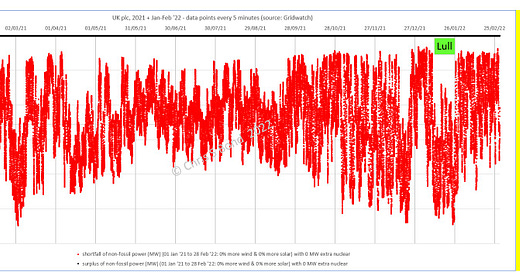


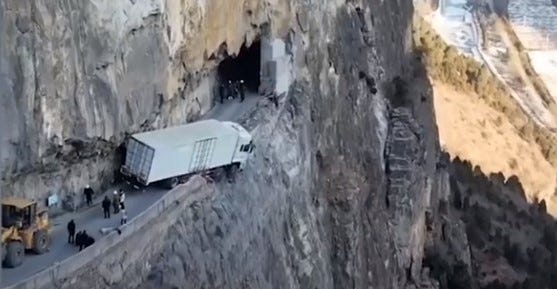

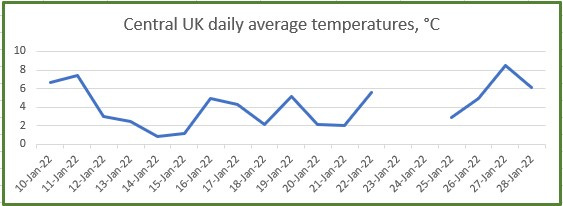
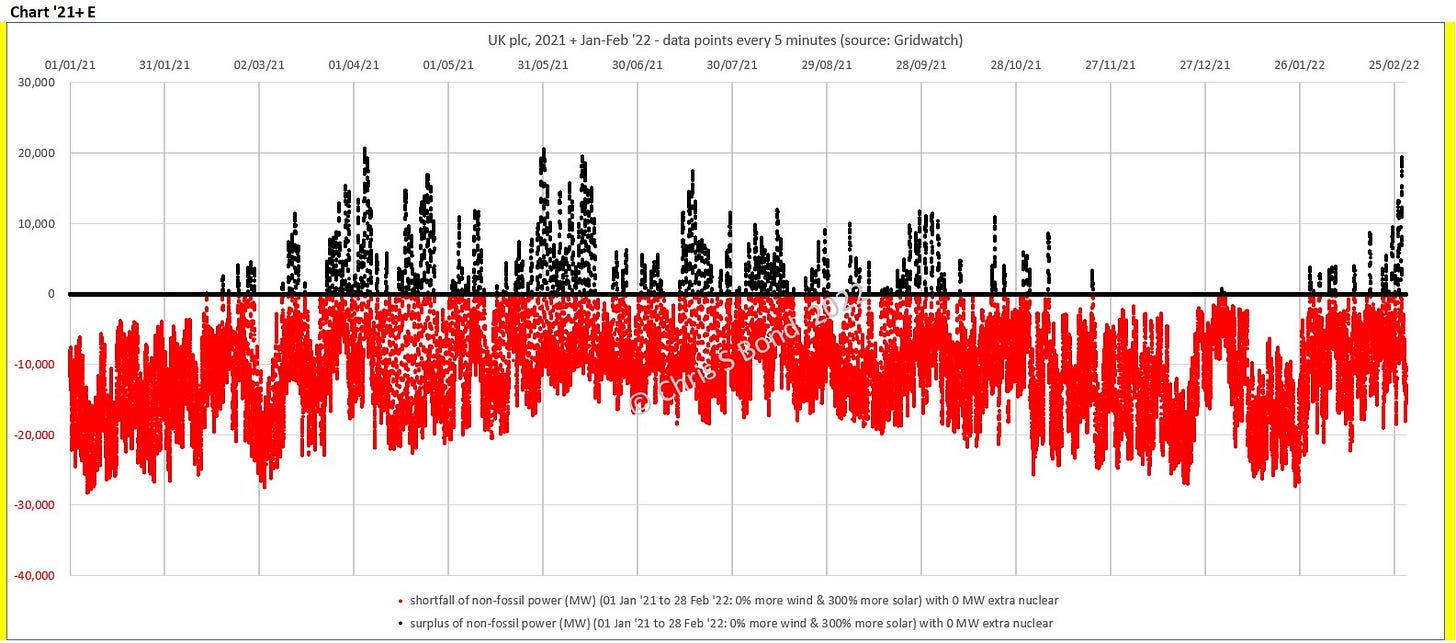
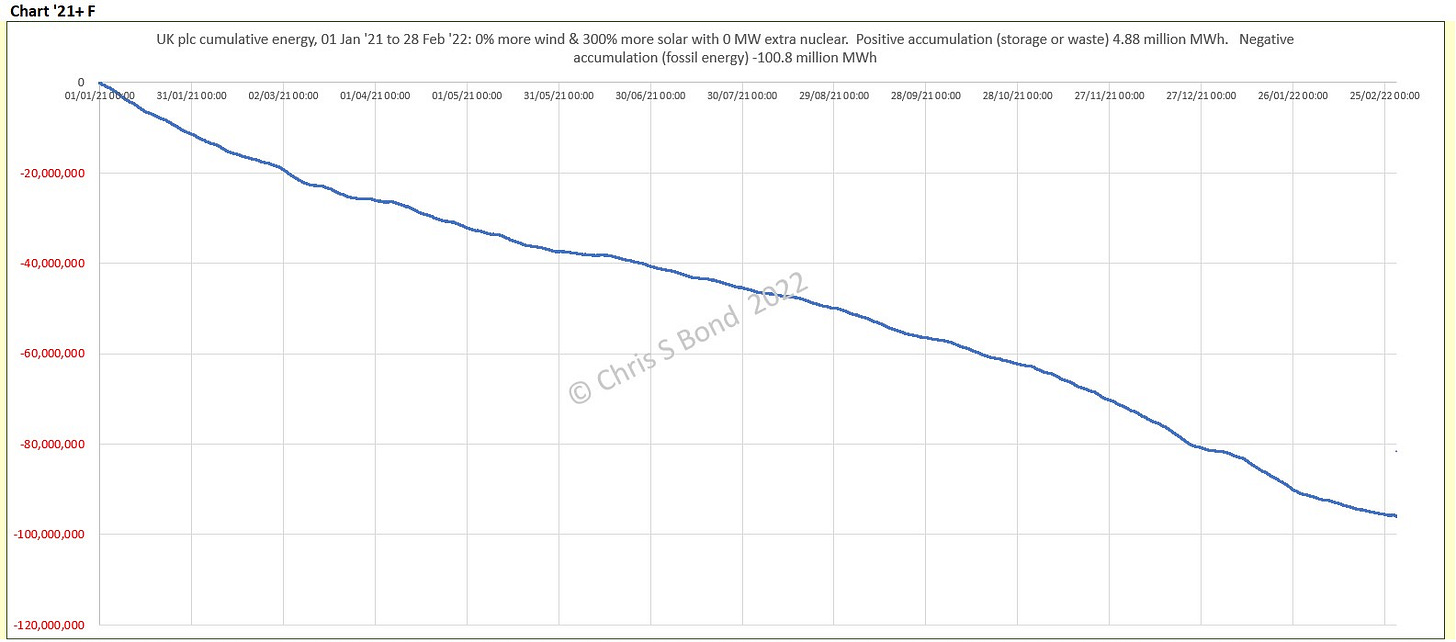
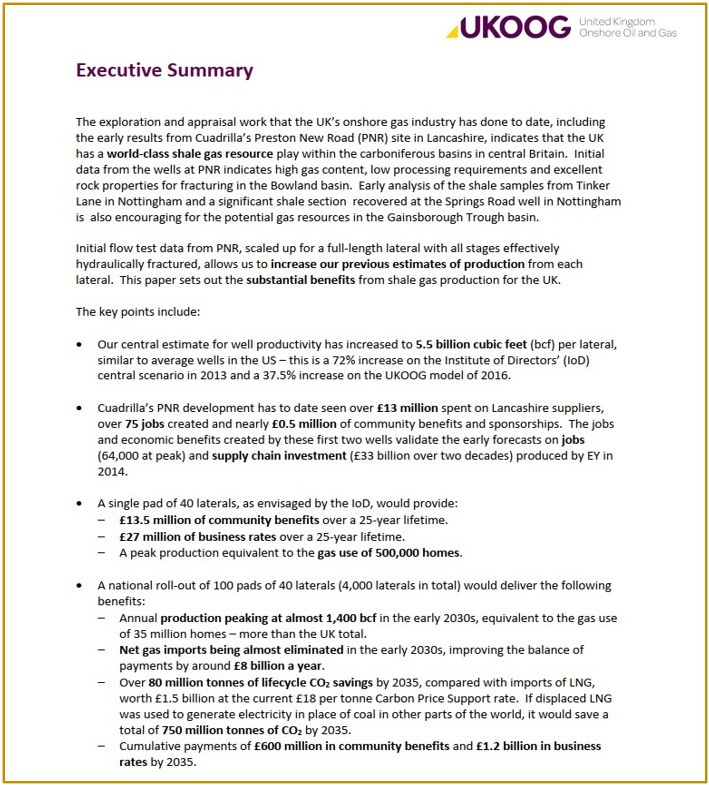
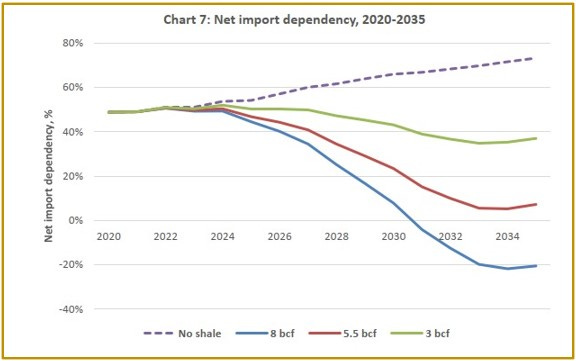
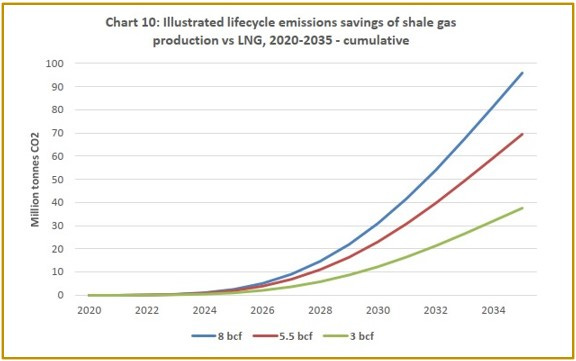
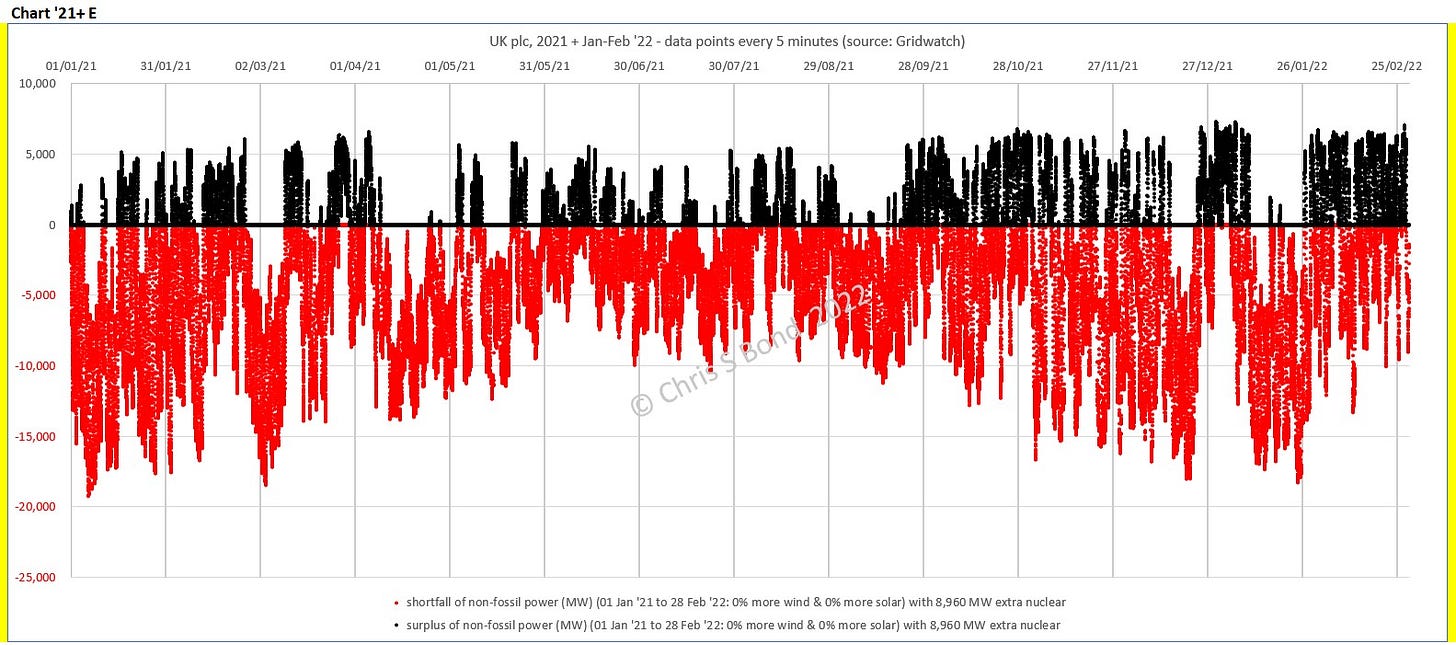
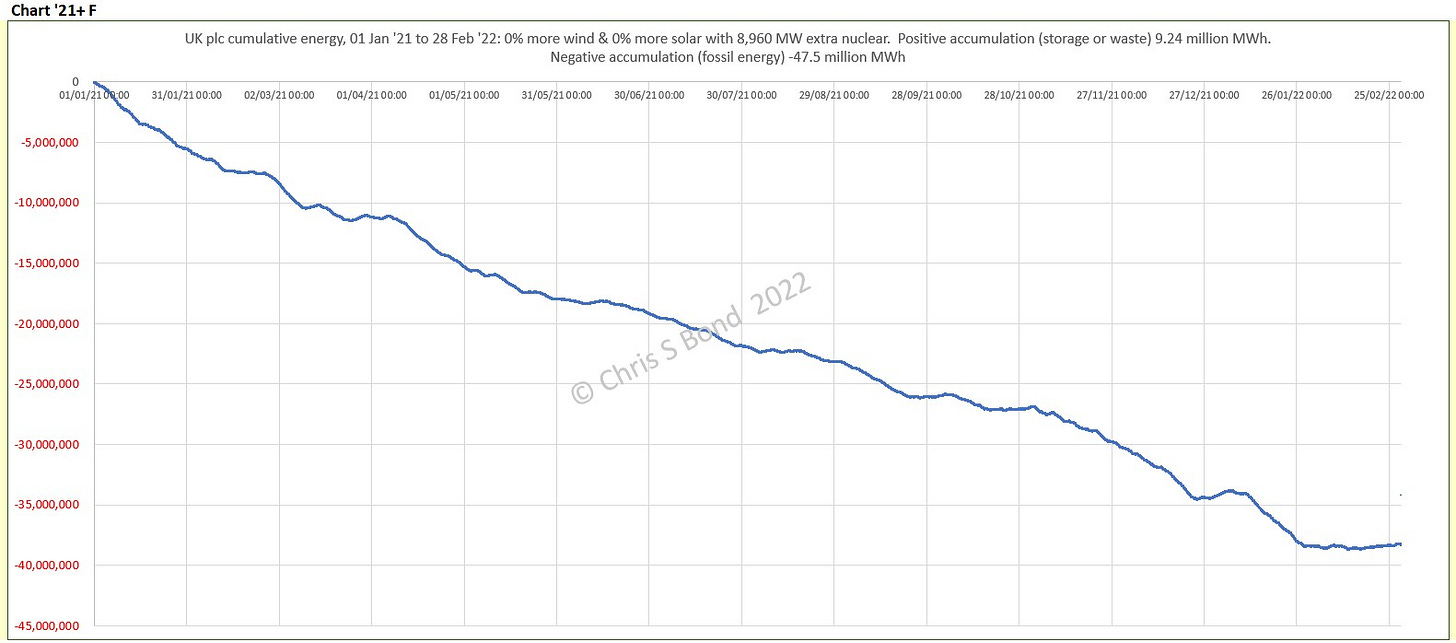
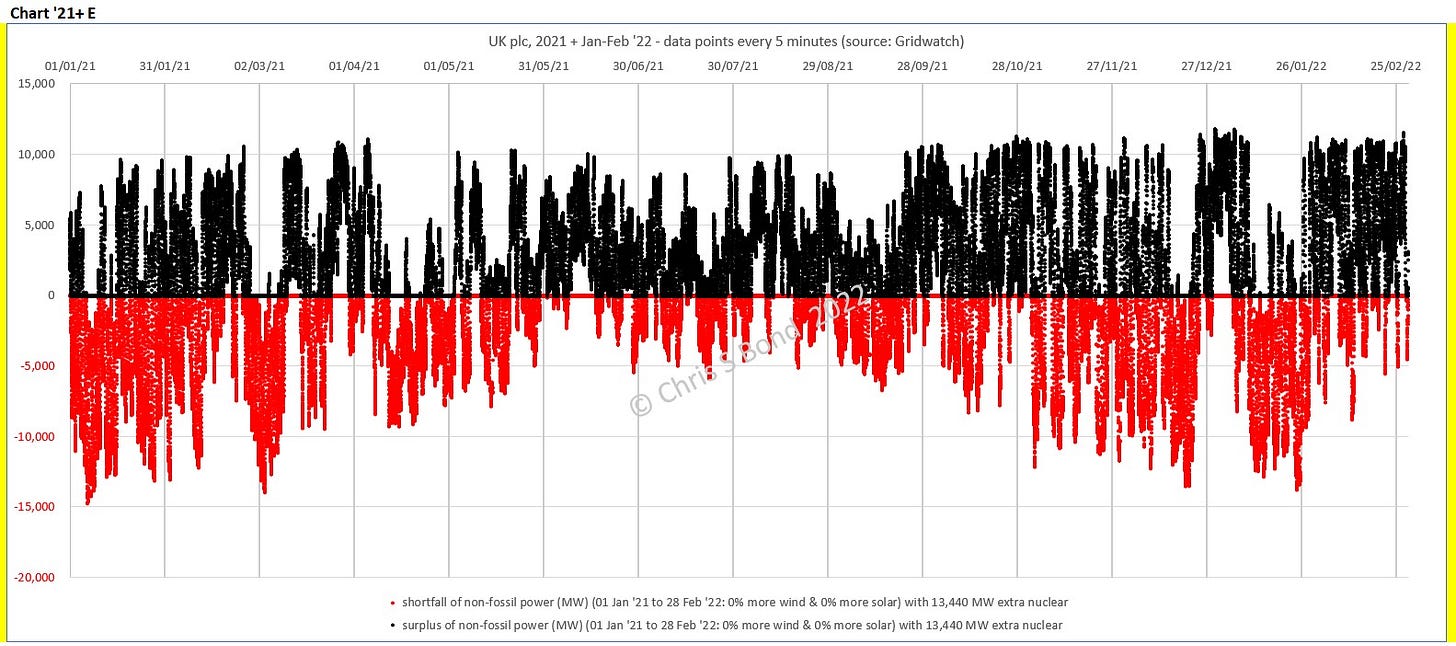
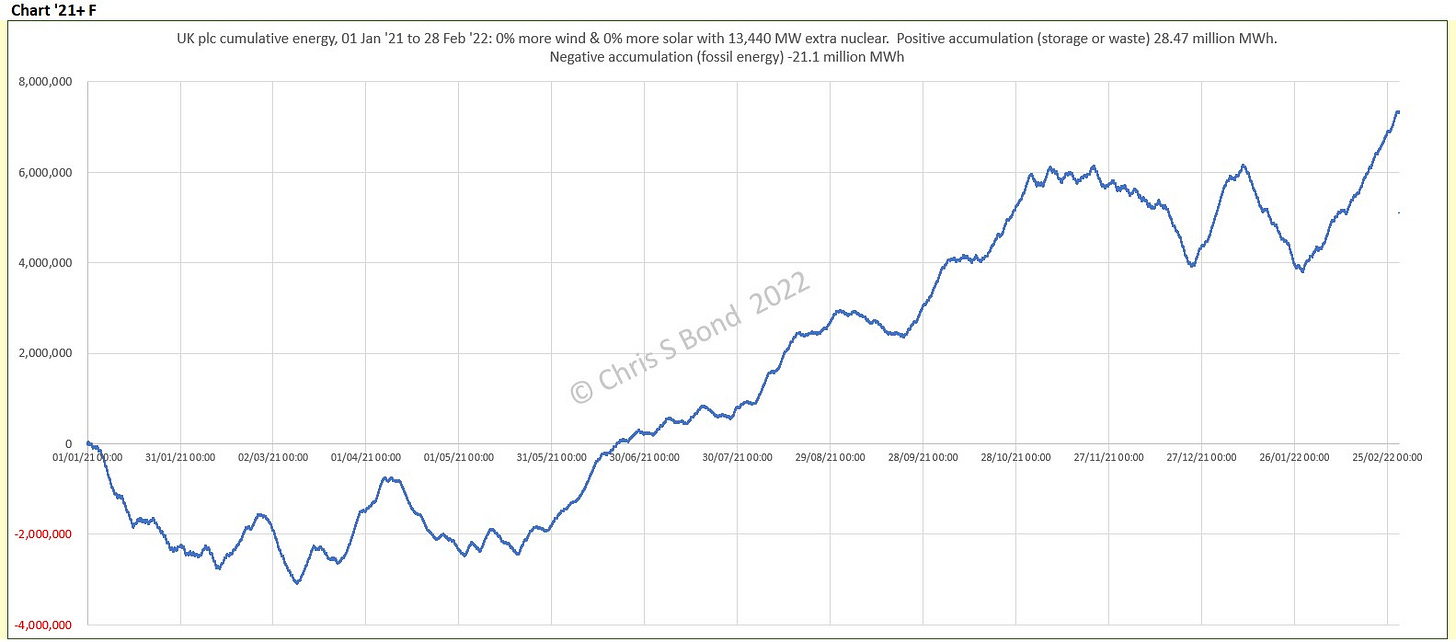
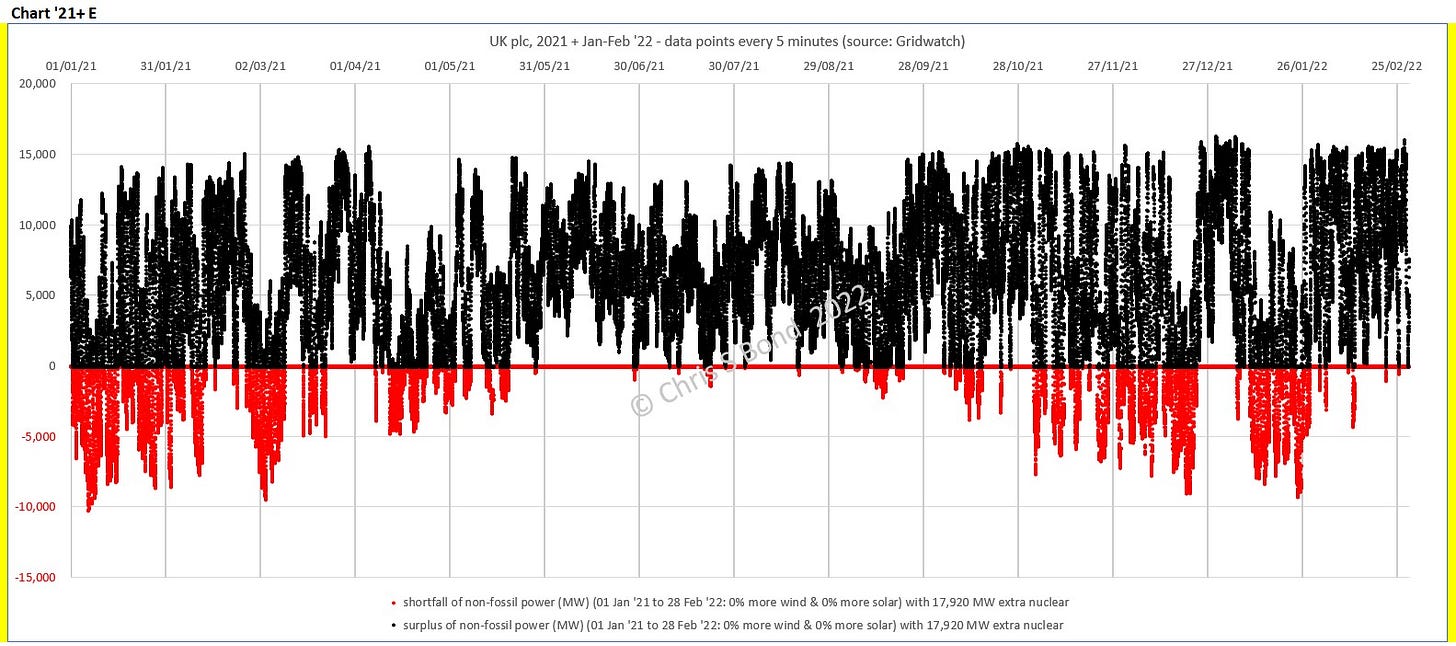
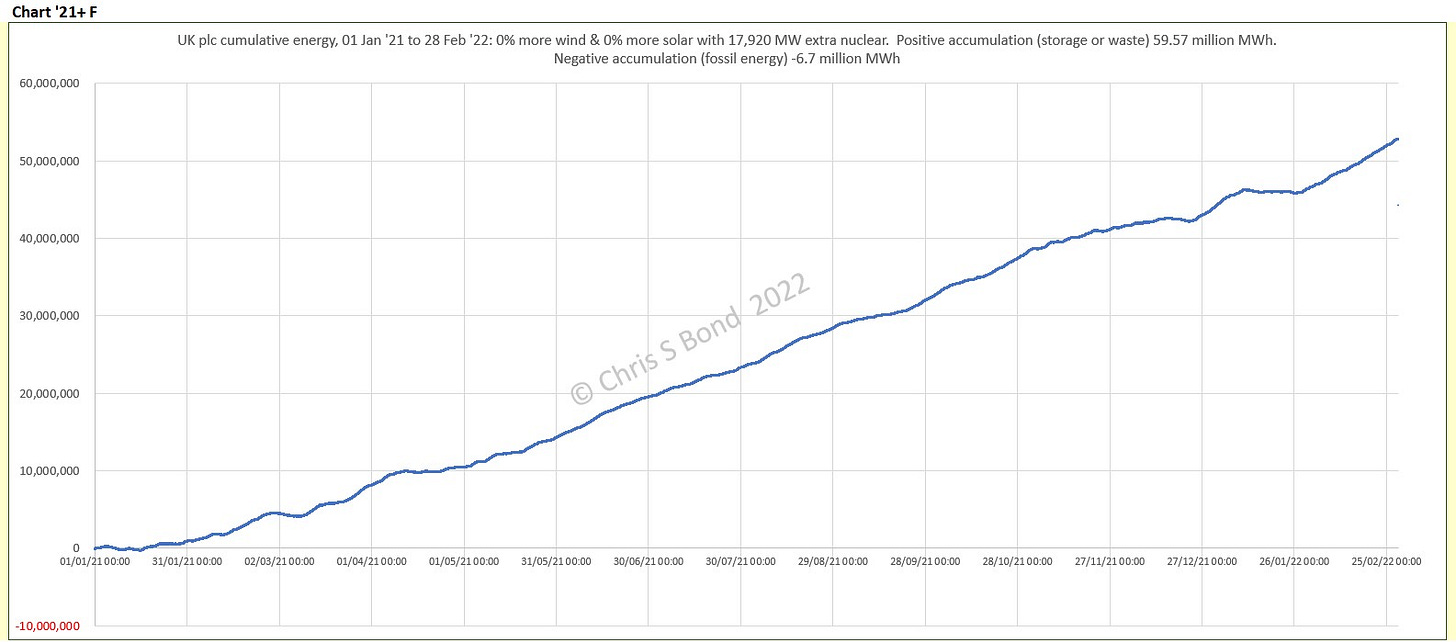
Chris, have you looked at Australia. Would be interesting to see your analysis of a sun drenched, and largely uninhabited continent, bless with the resources to make solar/wind + storage the most feasible.
This guys says 5hrs storage to be a very high percentage renewable, which should be feasible.
https://twitter.com/DavidOsmond8/status/1539458196187648001?s=20&t=C32SVYboUvz6VYjdKr-0iw
Chris, I've just noticed your excellent "Chart ‘21+E-1: 100% of current wind, 100% of current solar, for 2021+" is labelled "UKplc" whereas the data is 'GBplc' [Gridwatch (Elexon's) data doesn't cover NI]